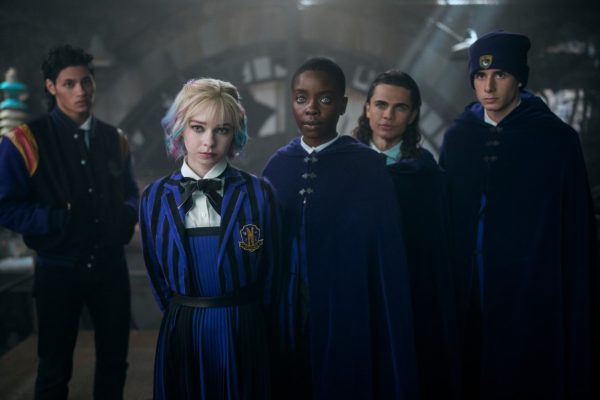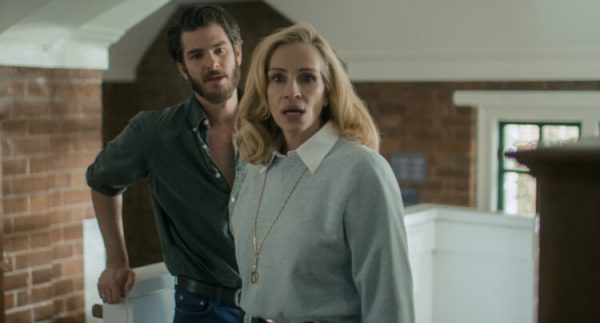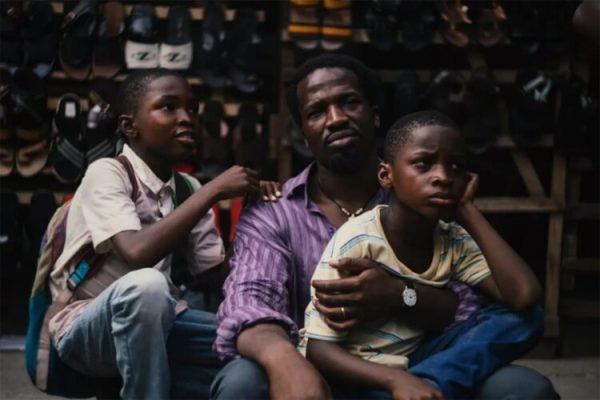
In The Testament of Ann Lee, Amanda Seyfried gives the finest performance of her career. The actress shakes, rattles, and moans through a selection of 18th-century hymns that have been updated by Daniel Blumberg, the composer who shouted out London’s Cafe Oto (another church of peculiar noises) after winning an unlikely and richly deserved Oscar for The Brutalist earlier this year. Directed by Mona Fastvold and co-written by her partner Brady Corbet, Testament feels so symbiotic to their previous movie that it’s not hard to picture Seyfried’s Lee––the real-life founder of the Shaker movement and a woman who believed herself to be the second coming––and Adrien Brody’s László Tóth existing in the same grainy, textured, 70mm frame (if a century or so apart).
The crumpled architect would certainly approve of the scope and design of Testament‘s ambitions. Its story begins in Manchester, where we find the young Lee working the cotton mills, rising through the ranks of a local sect of the Quakers (led by a reliably stoic Stacy Martin), marrying a blacksmith named Abraham (a brooding Christopher Abbott), and eventually seeing God after losing four babies. Lee’s riposte to all that tragedy is to form a splinter religion where she is “Mother,” sex is off the table (how exactly this will work in the long run is not exactly explored), and catharsis and ecstasy are found in movement and song. Thanks to her magnetism, the flock begins growing and a journey is taken towards the New World––though, as tends to happen when risking self-canonization, some are less enthused by it all.
As one of many who still thinks of The Brutalist‘s Venice press screening like a pagan farmer recalling the sunrise, no other title in this year’s selection had lived in my imagination these last few weeks quite like Testament. Yet for all its grandeur and dazzling tableaux, I left the theater a touch agnostic. Unwavering fanatics, no matter their rationale, do not always great protagonists make; even with Seyfried’s remarkable voice, presence, and energy, the music starts to skip. Fastvold understandably positions Lee as a survivor, but also someone whose only flaw is being too caring. I’m unconvinced there’s sufficient drama in that. The movie is resolutely sympathetic towards her, and without a whisper of ill intentions or hubristic folly, Ann Lee loses its considerable early fizz.
The task of shifting dramatic gears is left to a fine cast of supporting players, none of whom are really given space to rise above their cipher-like roles. Without a great deal of extended dialogue, much of the storytelling is left to the Testament itself, which is read in a detached narration like that on the Fastvold- and Corbet-scripted Vox Lux, yet minus the derisive irony which made that movie tick. Hints of conflict appear to arrive early with the admission of incestuous longing from Ann’s brother (played well by Lewis Pullman) and glimmer of a potentially challenging love interest in Thomasin McKenzie’s Mary. Neither come to fruition. Whatever her early hardships, Lee’s journey from cradle to grave is––at least by the standards of similarly scaled epics––relatively low on friction. It’s all a bit respectful.
Whether or not you end up agreeing with all that, there are still plenty of reasons to see it and (wherever possible) big and loud. The images, shot on 70mm by journeyman DP William Rexer, include compositions and lighting reminiscent of the Dutch Golden Age. The musical numbers, while sometimes as repetitive as those in Annette, find a compelling sweet spot between surreal and diegetic. And then there’s the way the characters move: amoeba-like, explosive, at times thrillingly new. It’s almost enough to make you a believer.
The Testament of Ann Lee premiered at the 2025 Venice Film Festival.
The post Venice Review: Amanda Seyfried Gives Her Finest Performance In Mona Fastvold’s The Testament of Ann Lee first appeared on The Film Stage.










